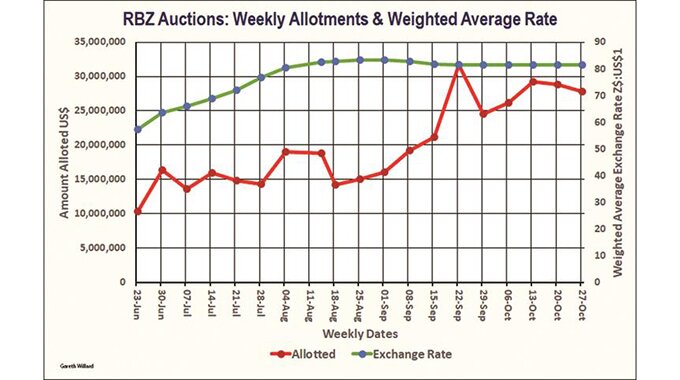Golden Sibanda
The National Development Strategy (NDS1) – Government’s new economic blueprint that will run for five years through 2025 — will place the economy on a sustainable path to recovery and growth because it has a strong implementation strategy.
Finance and Economic Development Minister Professor Mthuli Ncube said this in an interview with Zimpapers Television Network (ZTN) last week following the launch of the plan by President Mnangagwa on Monday.
At the launch, the President made assurances that Government would continue to implement bold, robust, innovative and responsive strategies.
NDS1, which is a successor programme to the Transitional Stabilisation Programme (TSP), lays a solid foundation for an upper middle-income economy by 2030, which is premised on a prosperous society.
Advertisement
The new policy builds and consolidates on TSP successes. With macroeconomic stability setting in, the NDS1 emphasises on employment creation, with 750 000 jobs expected in the next five years. It underscores the importance of promoting strong value chains.
Professor Ncube said TSP was a huge success as it ticked all the boxes of targeted policy reforms, among them restoration of fiscal and monetary policies, elimination of the budget and current account deficits, containing inflation and entrenching exchange rate stability.
The NDS1, which targets an average growth rate of at least 5 percent over its five-year term, is supported by a solid implementation, monitoring and evaluation team in the Office of the President and Cabinet (OPC).
“They (OPC) are going to make sure that every ministry, every department is able to account, so we have a full implementation matrix and none of the previous strategies had this implementation matrix. This is new and this is a departure from the past,” Minister Ncube said.
This time around, he said, Government was focused on results.
“This office that monitors the performance of the Government (and its line ministries/ministers) in terms of performance and targets is there, it is thriving and it works. Just today (Tuesday) they presented a report on what we have done in the last two years in terms of various projects; province by province.
“In the next two weeks, we have to share with the public in terms of what we have achieved in terms of those targets. So there is monitoring, there is no getting away, every three months, every minister reports on their 100-day projects and those projects are in the NDS1.
“So, that process continues. We never used to do this in the First Republic. This is new; this is all work of the Second Republic, it is all the work of the TSP, it is all part of NDS1 . . . we have a full monitoring office and we will be releasing information every three months in terms of our targets; in terms of projects (targeted under NDS1),” said Prof Ncube.
Once set macroeconomic targets are met, citizens should see an improvement in their lives, with inflation rate coming under control to improve purchasing power of wages, as numbers already show, he said.
Key targets of the new economic framework include steering the domestic economy to a sustainable growth path, fiscal deficit equal or lower than 3 percent of Gross Domestic Product (GDP), reducing inflation to between 3 to 7 percent by 2025 and foreign currency reserves equal to six months import cover by 2025.
Advertisement
It targets a competitive foreign exchange market, current account balance of minus 3 percent of GDP, public and publicly guaranteed debt below 70 percent of GDP and money supply growth that is aligned to low inflation and stable exchange rate, including the elimination of quasi-fiscal operations.
Tied to the targets are measures to improve production and productivity, particularly in agriculture, through measures such as climate-proofed agriculture, supporting productive farmers timely, investing in irrigation and developing dams and capacity to evacuate the water.
“All of that is necessary, and I could go on in terms of how we will support the mining sector, support the industrial sector, tourism sector and investing in infrastructure, all of that together, which we will do through a budgetary process, is what will give us the 5 percent growth.
“Everything falls from there, once the industry is supported, agriculture increases exports, mining continues to grow, that will create the export growth that will help us create ( for instance) those balance of payment figures, where we will export more than we import, which reduces the current account deficit.”
Market watchers say Government’s new strategy is likely to entrench stability and foster economic growth.
Economist Professor Gift Mugano said NDS1 is coming at a perfect time when the country is entering macro-economic stability.
“They are a couple of key facets that put NDS1 on a pedestal for success which you must take note of from the outset,” said Professor Mugano.
“The first issue is that NDS1 is coming at a very good time when the economy is already enjoying stability and what is happening is that it is simply looking at consolidating that stability. Stability is important for economic growth to an extent that I can tell you that the biggest stimulus package that the Government can give to business is not money, but stability in the macro-economic fundamentals,” he said.








